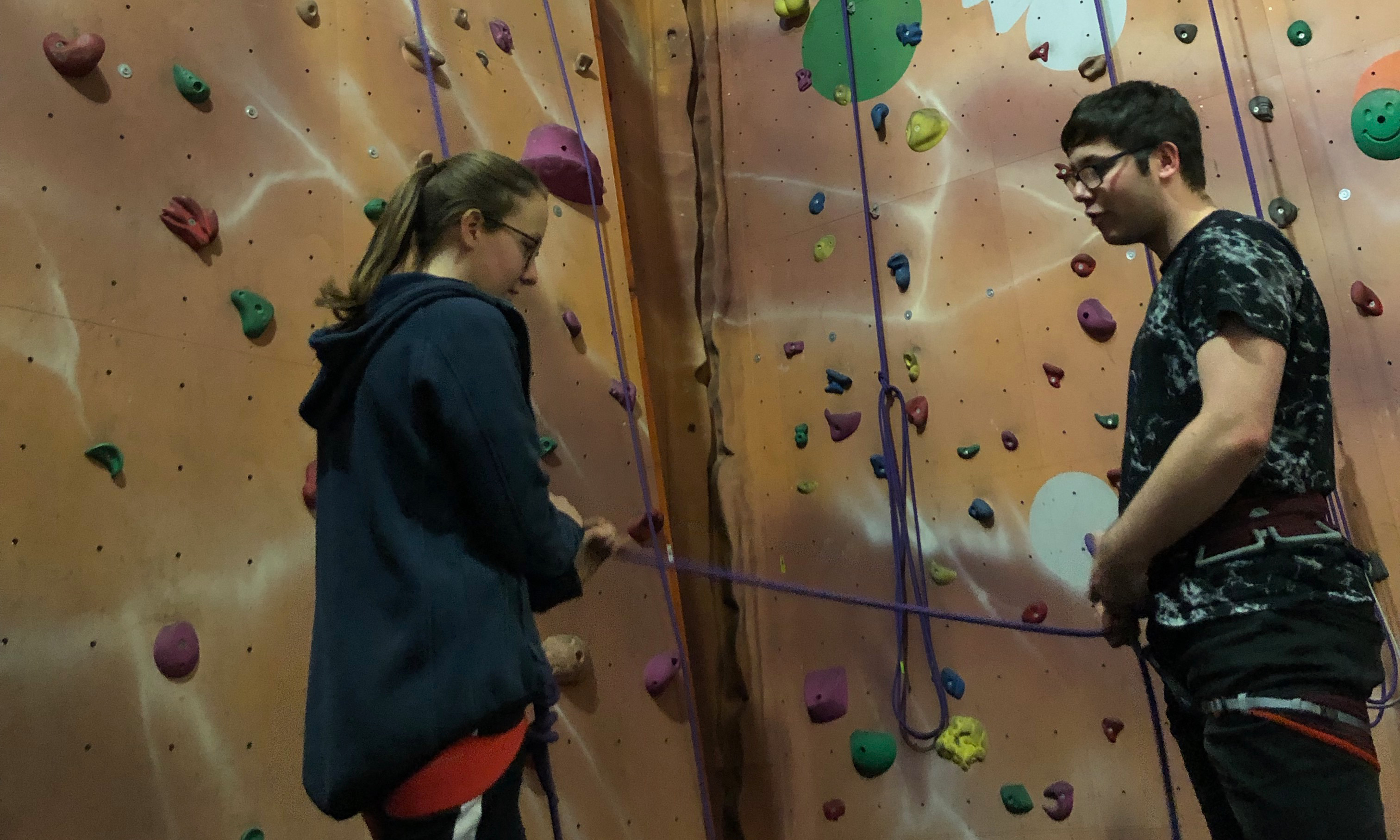Indoor Climbing Assistant


The Indoor Climbing Assistant qualification is for those with competence in the basic skills of climbing who wish to assist qualified climbing instructors and coaches in the management of their sessions in the UK and Ireland. Indoor Climbing Assistants are assessed as being competent in their role supporting qualified instructors and coaches but are not qualified to manage groups independently.
Indoor Climbing Assistants can have an inspirational effect on individuals, groups and communities. They work with participants and a range of others such as instructors, other climbing assistants, colleagues, volunteers, parents, teachers, youth workers and health professionals to ensure the climbing experience is the very best it can be.
What can an assistant do?
While operating under the direct supervision of a qualified instructor, an Indoor Climbing Assistant can:
- Assist with the fitting of basic equipment such as harnesses, helmets and rock shoes.
- Assist a qualified instructor with the supervision of core climbing techniques.
- Assist a qualified instructor at indoor and outdoor bouldering venues and climbing walls.
Assistants
- Need to be supervised by an instructor.
- Need to follow an instructor’s directions.
- Need to refer to an instructor for extra guidance.
- Need to be clear about their role.
To register
- Be at least 16 years old.
- Have an interest in assisting qualified instructors on indoor climbing walls.
- You must create an account with Mountain Training and register for the Indoor Climbing Assistant qualification (cost: £25)
Once you have registered for the scheme you will be given access to DLOG, Mountain Training’s digital logbook which has been developed to help you keep track of your climbing sessions and other experience. The Indoor Climbing Assistant scheme relies on experience and it is crucial that you record it so that it can be reviewed. If you need help using the DLOG there are some helpful pointers in the frequently asked questions.
To book a combined training and assessment course
- You must be registered on the Indoor Climbing Assistant qualification.
- You will be competent1 in the basic skills (belaying, harness fitting and tying on).
- You have recorded 5 indoor and/or 5 outdoor climbing sessions2 on DLOG. There is no personal climbing requirement for these sessions; you can have just belayed, but it is useful to have experience of climbing e.g. bottom roping or top roping.
The course
The course involves a minimum of 6 hours at a climbing wall of training and ongoing assessment in a supportive learning environment. This is usually delivered in one day, but may be run over 2 evening sessions.
Your experience prior to attending the course will have a huge impact on the result and you should try to be as fully prepared as possible.
At the end of the course you will receive one of two results: Pass or Defer. If you do not pass you will be given an action plan and guidance of further training and experience.
The syllabus
- Technical competence (equipment, belaying, personal skills and background knowledge)
- Management and decision making (managing participants under supervision, demonstrations and understanding your role)
- Teaching and learning skills
- The climbing environment (access, etiquette and ethics)
Do you have additional needs?
If you have a physical or mental impairment or disability which may require a provider to make reasonable adjustments so that you can take part in a training or assessment course… Find out how we can support you
Candidate handbook
The Indoor Climbing Assistant handbook has full details about the scheme including the syllabus and supporting guidance notes. You can download the handbook from the Mountain Training website.
Find a Course
If you would like to arrange a course for your school / group then please get in touch with me. Any courses organised will be listed in the course finder.
-
Competence is defined as meeting the ABC climbing wall membership standard or similar:
- can put on a harness and fit it safely.
- can tie into a harness correctly using either a rethreaded figure of eight knot with a minimum 10cm tail or a bowline (single or double) with a stopper knot.
- can belay, lower and secure a falling climbing safely using a belay device.
- can check that their climbing partner has put on their harness and tied in properly.
-
A session is a minimum of an hour. ↩︎